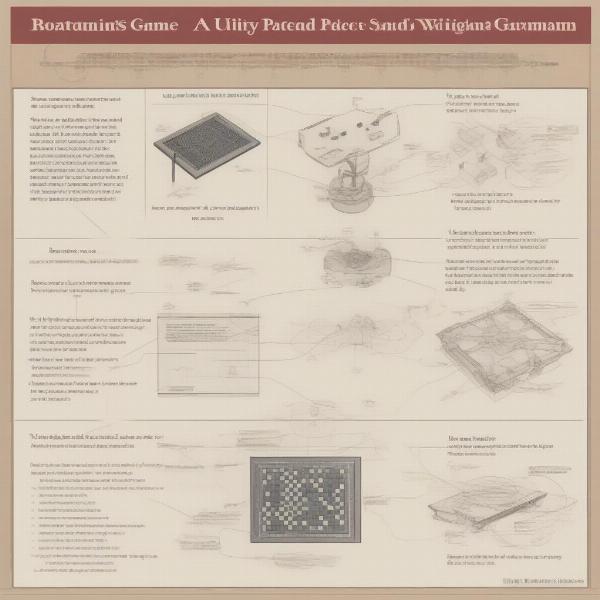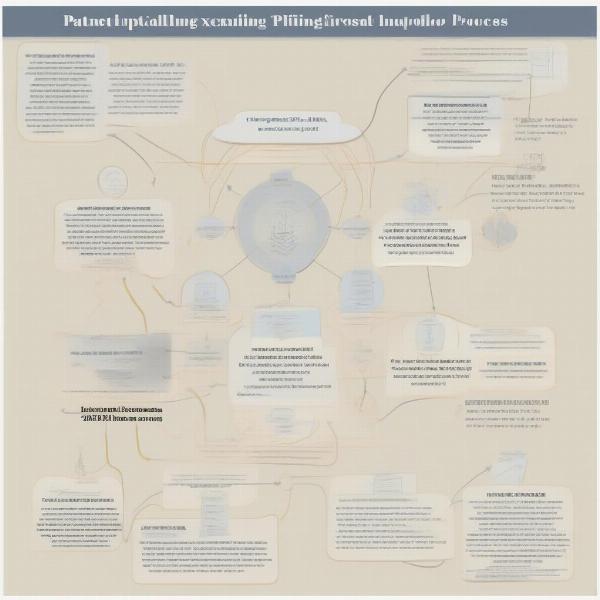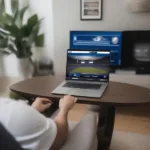Protecting your intellectual property is crucial, especially when you’ve poured your heart and soul into creating something unique like a board game. Knowing How To Patent A Board Game can be the difference between securing your invention and seeing it replicated without your consent. This guide will walk you through the process of obtaining a patent for your board game, covering everything from understanding the types of patents to navigating the application process.
Understanding Board Game Patents
Before diving into the process, it’s essential to understand what aspects of a board game are patentable. You can’t patent a general game idea, like “a game about trading resources.” Instead, patents focus on the specific mechanics, rules, and physical components that make your game unique. Think of it as protecting the “how” of your game, not the “what.” This includes novel game mechanisms, unique board designs, or innovative playing pieces.
Utility Patents vs. Design Patents
There are two main types of patents relevant to board games:
- Utility Patents: These protect the functional aspects of your game, such as the rules, gameplay mechanics, and how the different components interact. This is the most common type of patent for board games.
- Design Patents: These protect the ornamental design of your game, such as the appearance of the board, the shape of the pieces, or the artwork on the cards. They don’t cover the functionality.
Deciding which patent is right for your board game depends on what unique elements you want to protect. Often, a combination of both is the best approach. For instance, you might pursue a utility patent for a unique card-drafting mechanism and a design patent for the distinctive look of your game board.
 Board Game Patent: Utility vs Design Patent
Board Game Patent: Utility vs Design Patent
Preparing for the Patent Application
The patent application process requires thorough preparation. Here’s a breakdown of the crucial steps:
- Document Everything: Maintain detailed records of your game’s development, including sketches, rules revisions, and playtesting notes. This documentation proves your invention’s originality and timeline.
- Prior Art Search: Before filing, conduct a thorough search for existing patents and similar games. This helps determine if your game is truly novel and avoids potential infringement issues.
- Consult a Patent Attorney: Navigating the patent process can be complex. A specialized patent attorney experienced in game design can provide invaluable guidance, ensuring your application is strong and comprehensive.
Understanding Novelty and Non-Obviousness
For a board game to be patentable, it must meet two key criteria: novelty and non-obviousness.
- Novelty: Your game must be genuinely new, meaning no identical game exists in the prior art.
- Non-Obviousness: The unique aspects of your game can’t be something an expert in the field would consider obvious or a trivial modification of an existing game.
Filing the Patent Application
Once you’re prepared, it’s time to file your patent application with the relevant patent office, such as the United States Patent and Trademark Office (USPTO). The application typically includes:
- Detailed Description: A comprehensive explanation of your game, including its mechanics, rules, and components.
- Claims: These define the specific aspects of your game you’re seeking to protect. They are the heart of your patent.
- Drawings: Clear and detailed drawings of your game’s components, including the board, pieces, and any other relevant visuals.
- Oath or Declaration: A signed statement verifying your inventorship.
Working with a Patent Examiner
After filing, a patent examiner will review your application. They might request clarifications, amendments, or further evidence. Be prepared to respond promptly and thoroughly to any inquiries. This back-and-forth process is common and crucial for securing your patent.
Maintaining Your Patent
Once granted, your patent isn’t simply a “set it and forget it” affair. You need to actively maintain it by paying periodic maintenance fees. Failure to do so can result in your patent lapsing.
 Patent Filing Process for Board Game
Patent Filing Process for Board Game
Frequently Asked Questions (FAQ)
1. How long does it take to get a board game patent? The process can take several years, depending on the complexity of the game and the patent office’s backlog.
2. How much does it cost to patent a board game? The cost varies depending on the type of patent and attorney fees, but expect a significant investment.
3. Can I patent a game idea without a prototype? While you can file a provisional patent application based on a detailed description, a working prototype is generally recommended.
4. What happens if someone infringes on my board game patent? You can take legal action to stop the infringement and potentially recover damages.
5. Do I need a patent to sell my board game? No, you don’t need a patent to sell your game. However, a patent protects your invention from being copied.
6. Can I license my patented board game to another company? Yes, a patent grants you the exclusive right to license your game to others.
7. What happens after my patent expires? After the patent term (typically 20 years for utility patents and 15 years for design patents), your game enters the public domain and can be freely copied.
Conclusion
Patenting a board game is a complex but worthwhile process for protecting your creative work. By understanding the different types of patents, preparing thoroughly, and working with a qualified patent attorney, you can significantly increase your chances of securing your board game invention and reaping the rewards of your hard work. Don’t hesitate to reach out to a patent professional to begin the process and protect your unique creation. Share this guide with fellow game designers who need to understand how to patent a board game!

